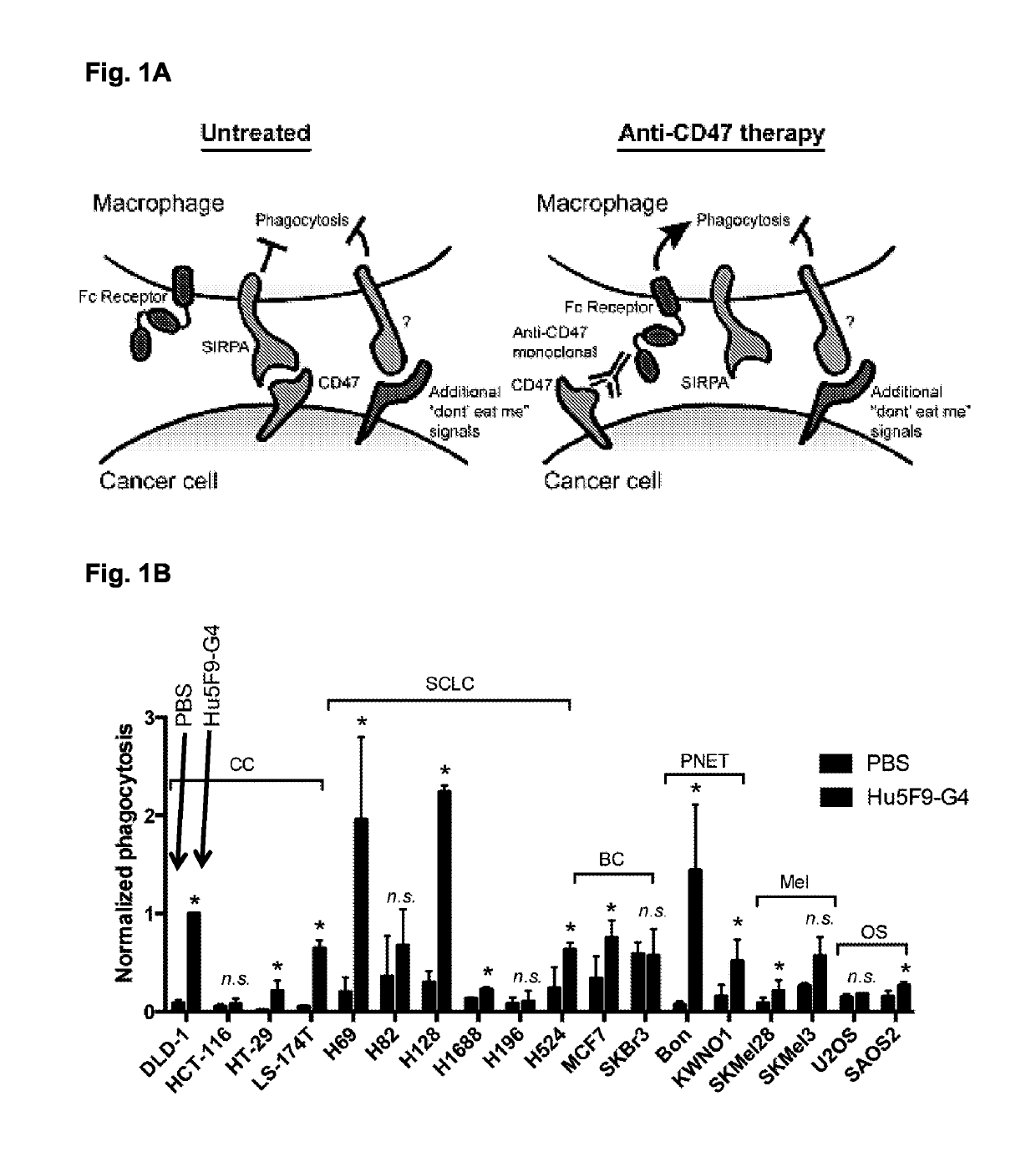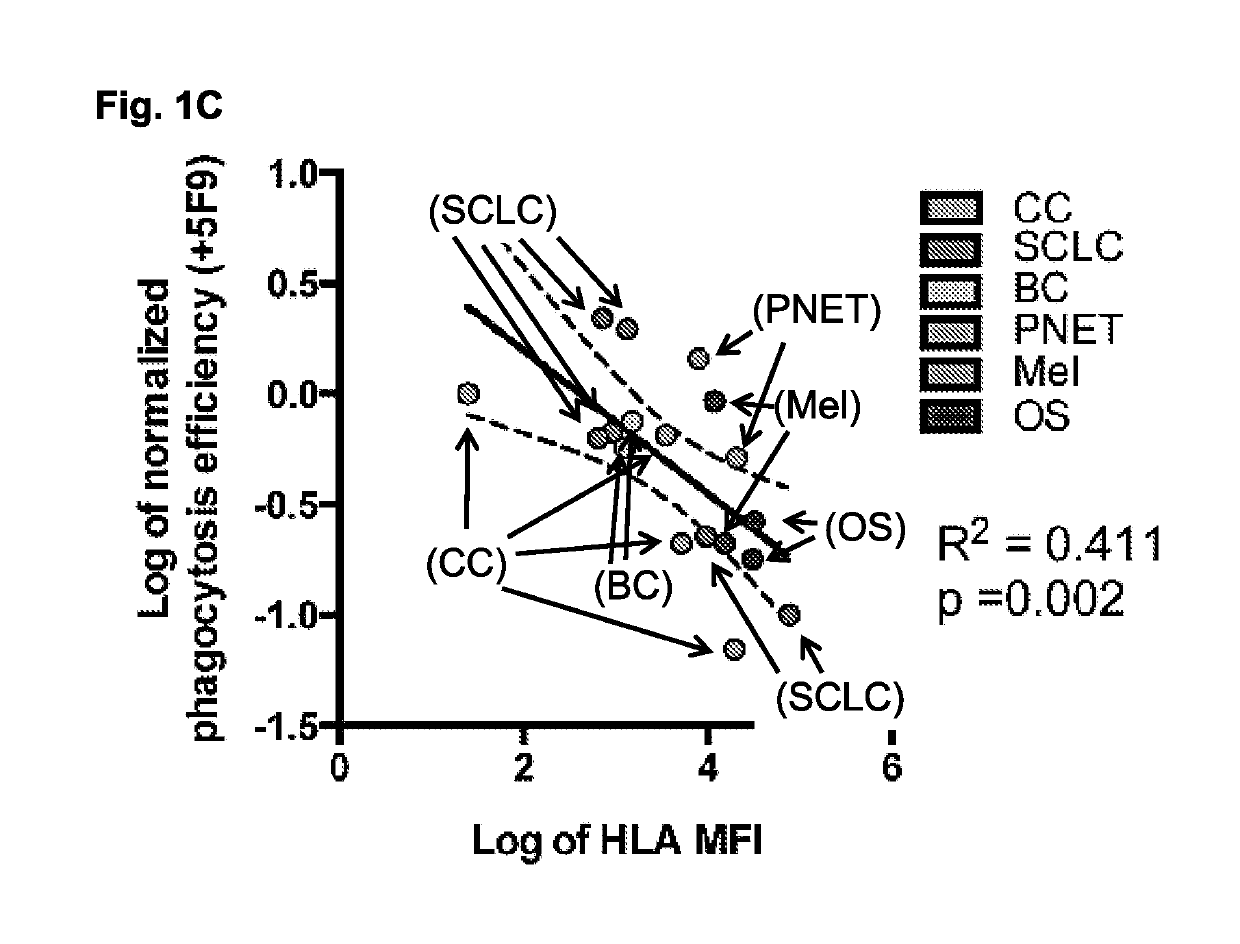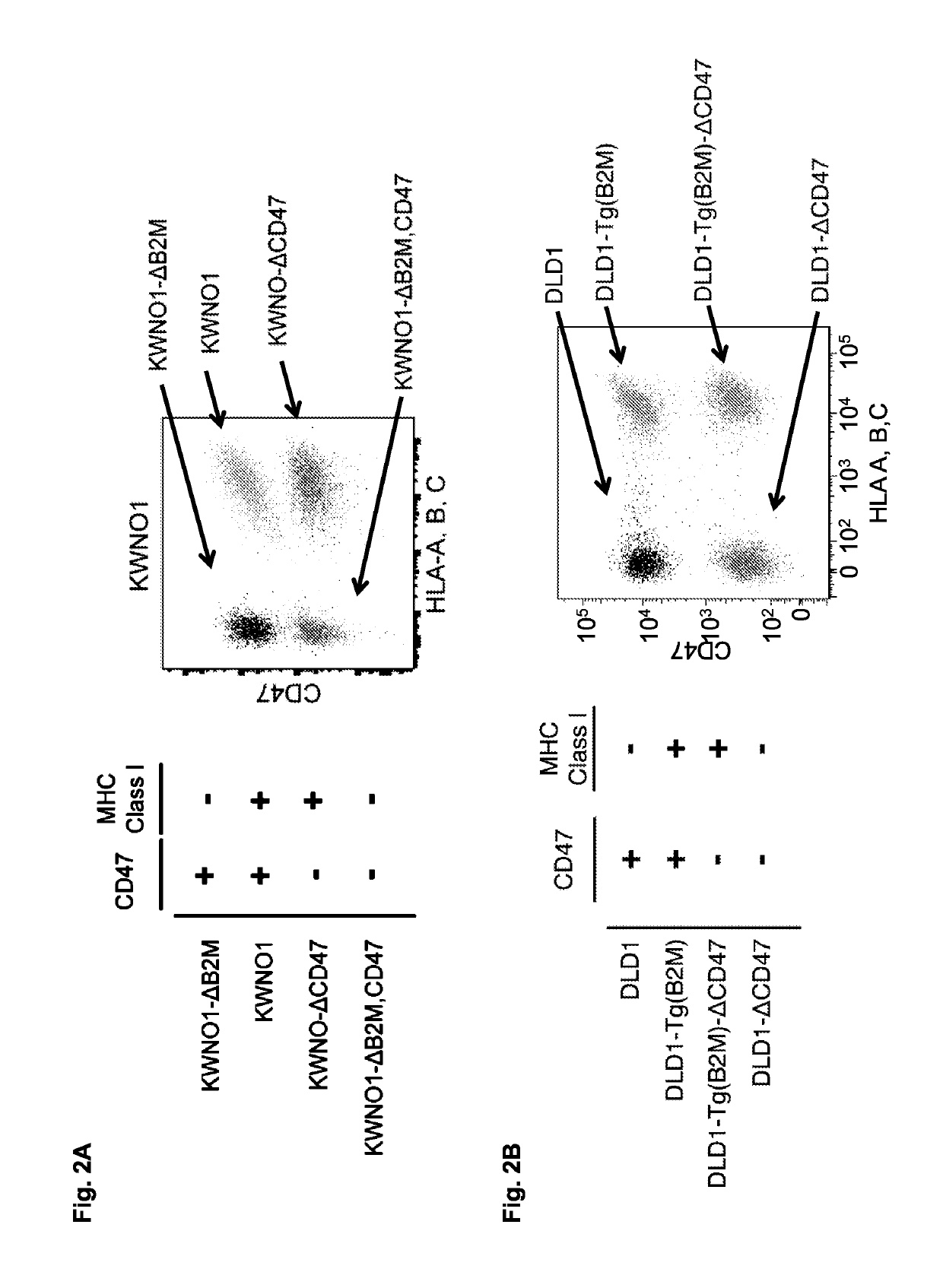Compositions and methods for inducing phagocytosis of MHC class I positive cells and countering anti-CD47/SIRPA resistance
a technology of phagocytosis and positive cells, applied in the direction of antibody medical ingredients, peptides/protein ingredients, peptides, etc., can solve the problem of strong limit of the ability of this response, and achieve the effect of reducing the number of inflicted cells
- Summary
- Abstract
- Description
- Claims
- Application Information
AI Technical Summary
Benefits of technology
Problems solved by technology
Method used
Image
Examples
example 1
[0228]The experiments here show that MHC class I, which is among the most intensely studied regulatory complexes in immunology due to its function in signaling to T and NK cells, plays a previously unappreciated role in protecting cells from attack by macrophages. The results demonstrate that MHC class I expression inhibits macrophage-mediated phagocytosis of cells, both in vitro and in vivo. Macrophage recognition of MHC class I is shown to be specifically mediated by the surface receptor LILRB1. Biologic anti-LILRB1 agents, aimed either at MHC class I or at LILRB1, are sufficient to disrupt this protection, thus defining the MHC / LILRB1 signaling axis as an important mediator of innate immune regulation and a target for therapy (e.g., anti-cancer immunotherapy).
[0229]Materials and Methods
[0230]Cell Culture
[0231]DLD-1, NCI-H69, NCI-H82, NCI-H1688, NCI-H196, NCI-H524, Bon, and KWNO1 cells were grown in RPMI+GlutaMax (Life Technologies) supplemented with 10% fetal bovine serum (Hyclon...
example 2
[0272]The results presented here demonstrate that MHC class I expression by cancer cells directly inhibits macrophage-mediated phagocytosis, and further show that macrophage detection of MHC class I is mediated by the inhibitory surface receptor LILRB1. Biologic agents aimed either at MHC class I or at LILRB1 were sufficient to disrupt this protection and potentiate macrophage attack in vitro and in vivo, thus defining the MHC:LILRB1 signaling axis as not only an important regulator of macrophage effector function, but also a biomarker for therapeutic response to anti-CD47 agents, and a target for anti-cancer immunotherapy. Some of the results presented in example 2 are also presented in Example 1 above.
Results
Expression of MHC Class I Correlates with Resistance to Macrophage Phagocytosis
[0273]Drugs against the CD47:SIRPA pathway have broad efficacy to induce phagocytosis of cancer cells, largely irrespective of disease subtype or tissue of origin. Accordingly, when donor-derived hu...
example 3
[0314]FIG. 17. Results from experiments that measure phagocytosis of two different human breast cancer cell lines (MDA-MB-468 and MDA-MB-231) by human macrophages with and without anti-LILRB1 antibody (and in the presence or absence of other antibodies, e.g., Hu5F9-G4 which is an anti-CD47 antibody). Bars from left to right are: IgG4, Hu5F9-G4, Cetuximab, Trastuzumab, Panitumumab, Cetuximab+Hu5F9-G4, Trastuzumab+Hu5F9-G4, and Panitumumab+Hu5F9-G4.
[0315]FIG. 18 presents data showing that CD47 and MHC class I signaling axes are independent anti-phagocytic signals. FACS-based measurement of phagocytosis by human macrophages co-cultured with parental KWNO1 cells (gray) and B2M-deleted KWNO1 cells (pink), upon treatment with PBS, the anti-CD47 antibody Hu5F9-G4 (which blocks the CD47 / SIRPA interaction), or the anti-CD47 antibody 2D3 (which binds CD47 but does not block its interaction with SIRPA, and thus represents any antibody that binds to a target cell and opsonizes that cell). Value...
PUM
| Property | Measurement | Unit |
|---|---|---|
| dissociation constant | aaaaa | aaaaa |
| dissociation constant | aaaaa | aaaaa |
| dissociation constant | aaaaa | aaaaa |
Abstract
Description
Claims
Application Information
 Login to View More
Login to View More - R&D
- Intellectual Property
- Life Sciences
- Materials
- Tech Scout
- Unparalleled Data Quality
- Higher Quality Content
- 60% Fewer Hallucinations
Browse by: Latest US Patents, China's latest patents, Technical Efficacy Thesaurus, Application Domain, Technology Topic, Popular Technical Reports.
© 2025 PatSnap. All rights reserved.Legal|Privacy policy|Modern Slavery Act Transparency Statement|Sitemap|About US| Contact US: help@patsnap.com



